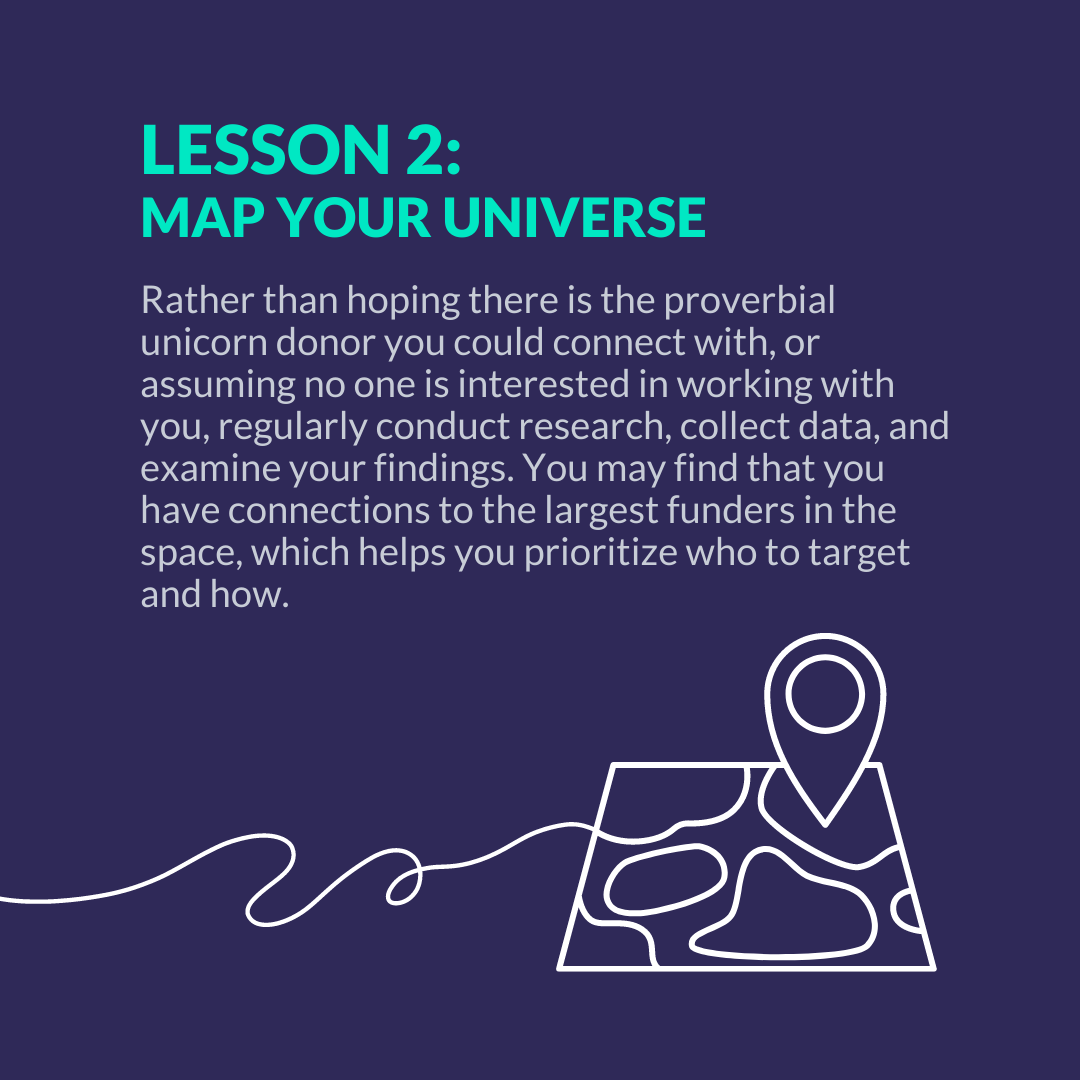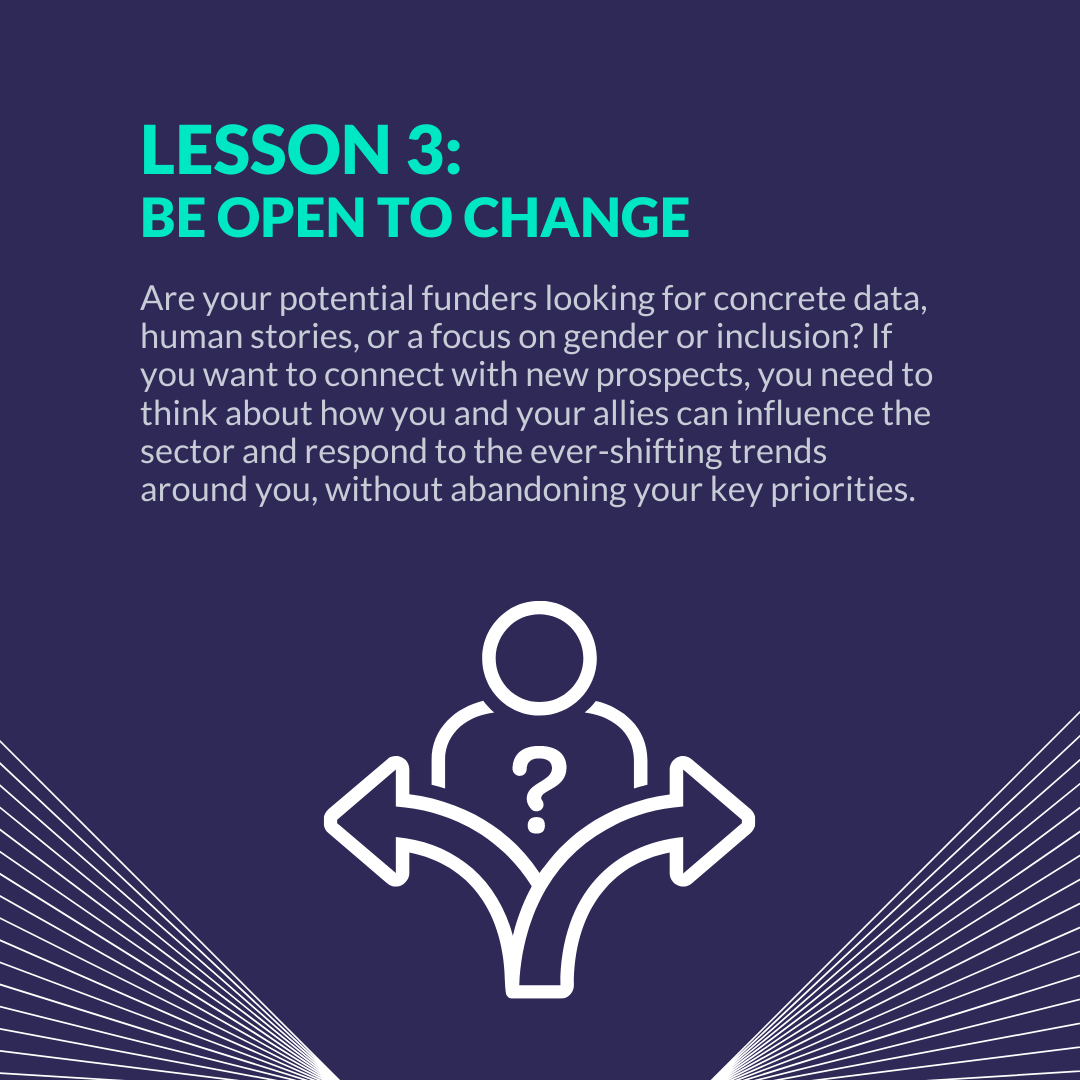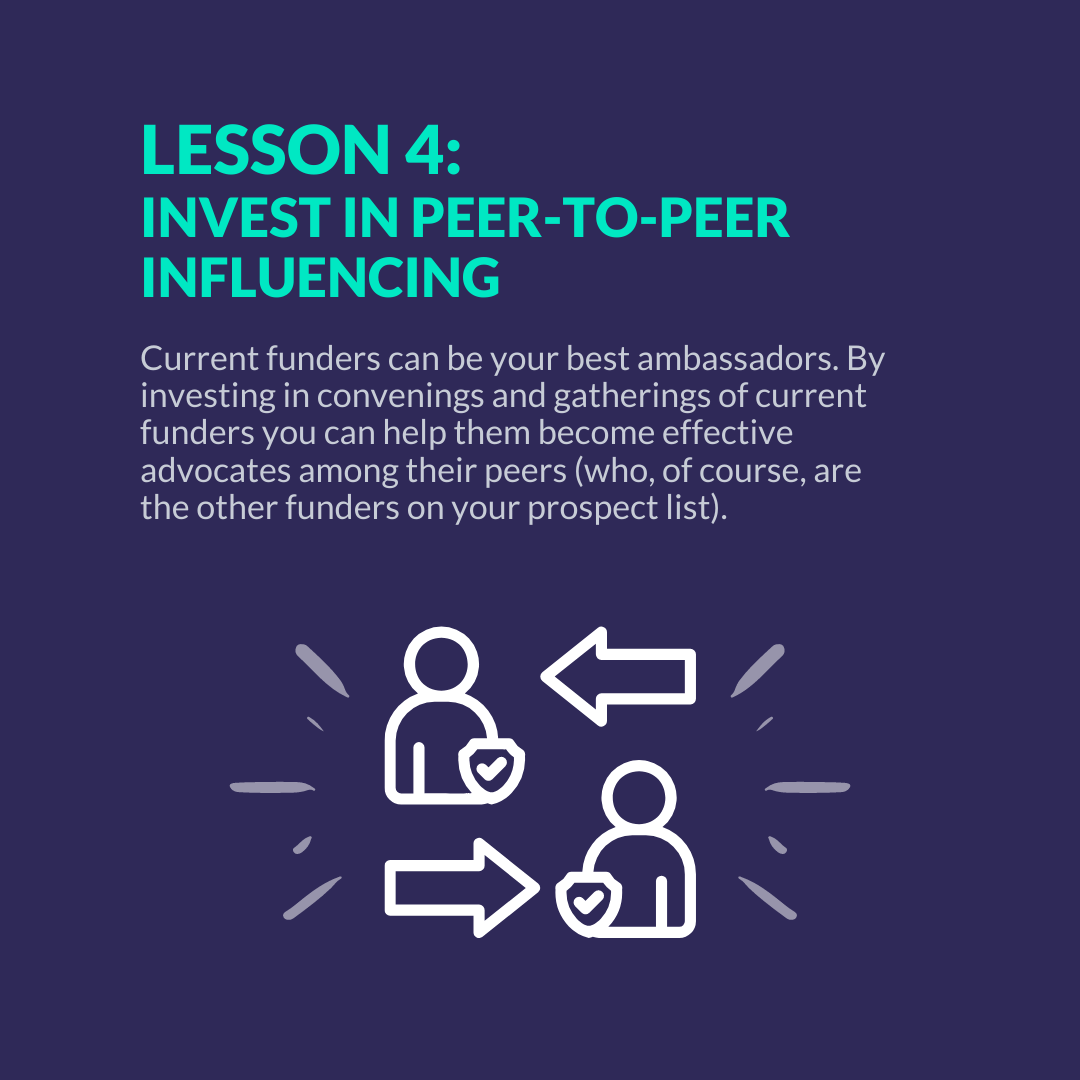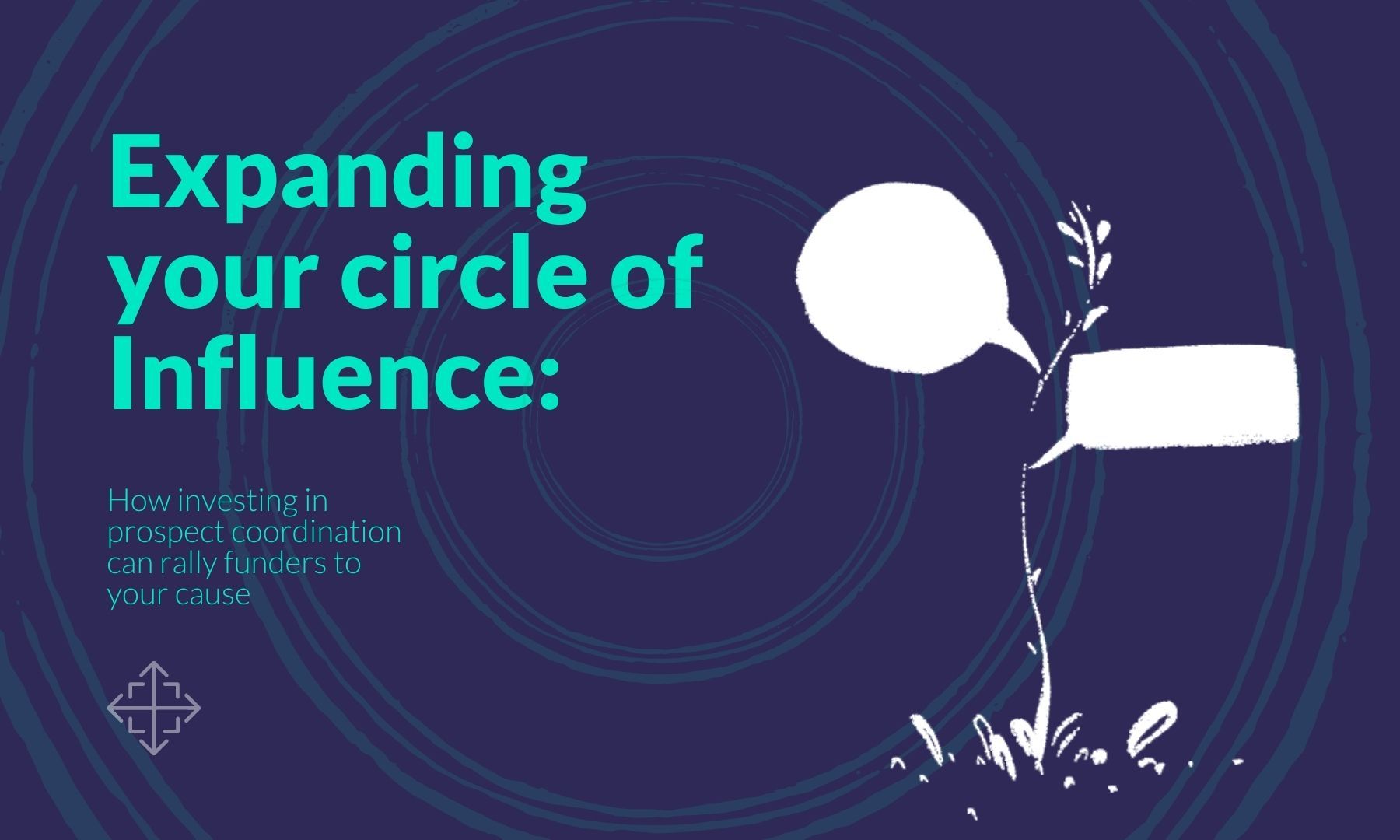TAI recently partnered with Geneva Global to review the state of funding in the anti-corruption sector, a sector suffering from a reduction in financial support in recent years. Collectively we looked at prospects for new funding partners, allied with existing peers to compile data and insights on giving trends, and developed an overview of all potential prospects currently working in or around anti-corruption. These are a few key lessons learned from this experience.
Originally published in Geneva Global
In the last few years conflict, climate crisis, social unrest, and pandemics have all impacted and shifted philanthropic funding flows. While funding trends may come and go, many organizations routinely review their strategy, shifting their focus and their dollars to suit. Funders, understandably, want to contribute to issues that are seen as important and urgent in the present moment, which can sometimes mean tackling the symptoms rather than the root causes. Fads are also real in philanthropy, whether donors explicitly acknowledge their influence and, like all fads, they eventually peter out…meaning the previously “shiny topic” of donor interest quickly withers. This combination of factors – fad-driven philanthropy coupled with an understandable desire to address the more visible symptoms of complex social challenges can work against sectors or issues that struggle to generate an immediate “wow” factor from donors.
LESSON 1: DON’T WAIT UNTIL THERE IS A LACK OF FUNDING TO IDENTIFY NEW DONORS

Reaching out to peers, keeping track of prospective new partners, and taking the time to contribute to others’ research can help to generate new ideas and attract new funding into a sector.
One sector where this particularly rings true is the field of transparency, accountability and anti-corruption, which one might argue is the most pervasive problem society is facing today. So, how can we draw attention, and funding, to this crucial sector? Cue TAI, a donor collaborative keen to bring philanthropists and donors together to actively pursue funding and attract greater global attention to the issues of corruption.
LESSON 2: MAP YOUR UNIVERSE

Rather than hoping there is the proverbial unicorn donor you could connect with, or assuming no one is interested in working with you, regularly conduct research, collect data, and examine your findings. You may find that you have connections to the largest funders in the space, which helps you prioritize who to target and how.
While our review certainly surfaced many reasons funding has become more difficult to secure (a shift in focus to diversity and equity, as well as, localization of funding, responses to the COVID-19 pandemic, action to tackle the climate crisis, the war in Ukraine) , and a desire to stay away from controversy and risk alienating governments), it also surfaced opportunities for engagement with new partners in the philanthropic sphere.
It can be surprising how little funders sometimes know about their peers operating in the same spaces. While the usual suspects who move in the same circles are well known to each other, those on the periphery are seldom considered. Pulling together a list of eighty potential funder partners, TAI was able to see clearly where new partners with significant funding — but who were working in parallel to the “usual suspect” donors — were. They could also identify funders whose key social change objectives were in constant peril of being held back by corruption. While there were no huge surprises, nor the proverbial “unicorn” funder, two things were clear: 1) there were fewer funders focused solely on corruption than there had previously been; and 2) the only way to increase funding was to join forces, support peer prospecting, and help build the case for support aimed at funders not yet paying attention to this sector.
LESSON 3: BE OPEN TO CHANGE

e your potential funders looking for concrete data, human stories, or a focus on gender or inclusion? If you want to connect with new prospects, you need to think about how you and your allies can influence the sector and respond to the ever-shifting trends around you, without abandoning your key priorities.
In addition to traditional prospect generation, we worked with TAI to develop donor personas – grouping like-minded funders into categories with specific attributes. Segmenting the universe of potential prospects in this manner helped to identify similarities in the type of impact various funders seek in potential grantees and projects. Understanding funder motivations and desired impact allowed us to develop tailored cases for support for each donor type. For instance, some donors seek explicit financial impact (i.e., loopholes closed, dollars spent on direct programming that would have otherwise been lost to corruption) while others prefer to put a human face to the work (i.e., stories from the field highlighting the real impact of policy changes that have occurred after more women take on local leadership roles.) Following tailored case development, we were able to support TAI and its member partners in developing strategic and tactical outreach plans for approaching both existing funders, as well as introducing transparency and accountability work to new prospective funders focused on specific outcomes in other areas of global development.
LESSON 4: INVEST IN PEER-TO-PEER INFLUENCING

Current funders can be your best ambassadors. By investing in convenings and gatherings of current funders you can help them become effective advocates among their peers (who, of course, are the other funders on your prospect list).
Looking to other examples of neglected sectors that successfully turned the funding corner, none come to mind more than the aptly name sector of Neglected Tropical Diseases. For decades, multitudes of easily curable diseases went untreated until 2006 when the Legatum Foundation, a founding Investor of the END Fund, started looking for peers who might be persuaded to join forces, raising awareness and dollars to be able to tackle these diseases once and for all. They funded programs in Rwanda and Burundi and over “span of four years, they treated more than eight million people for diseases like intestinal worms, schistosomiasis, and lymphatic filariasis at a small cost. Their intervention demonstrated the feasibility of quickly scaling up NTD programs to a national level.” The END Fund was formally founded in 2012 and since then has worked with its partners to provide more than a billion treatments. Its message and its history are clear on their website:
“We have been fortunate enough to partner with many activist-philanthropists that give more than just funds to this issue in these last five years. Using their time and voice, many are an important part of the NTD community and have become long-term advocates for the cause. The energy, talent, impact, and joy of the diverse community brought together by the END Fund has been, and will continue to be, a key driver of our unique contribution to the global movement to end NTDs.”
By banding together, the Legatum Foundation and partners were able to bring attention to something that was “neglected” and by doing so, were able to crowd-in additional funders, rally media attention, and ultimately increase impact. The world of transparency, accountability and participation has recent wins and increasingly concrete impact, and a strong tie to global leaders. With a little work, and by putting a face to corruption to share compelling stories, its community can build on its strengths and achieve similar impact with its own allies. The Transparency and Accountability Initiative plans to embrace these good practices, building from their previous work and investing in prospective funder outreach using TAI members as ambassadors.
